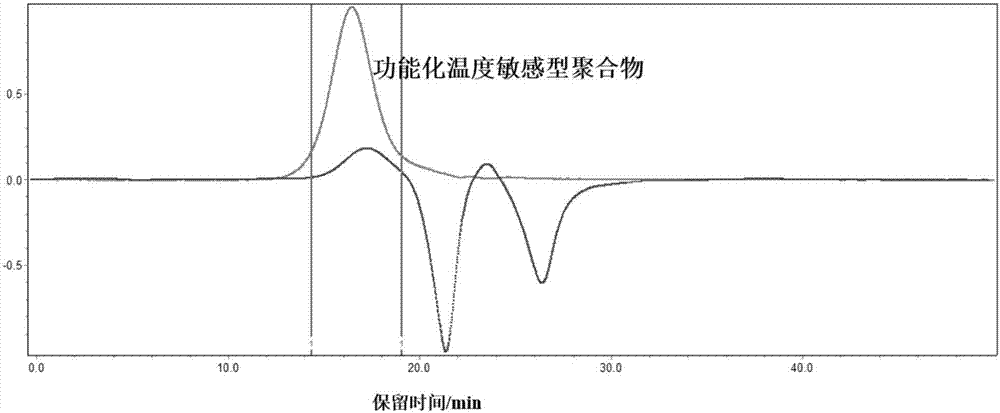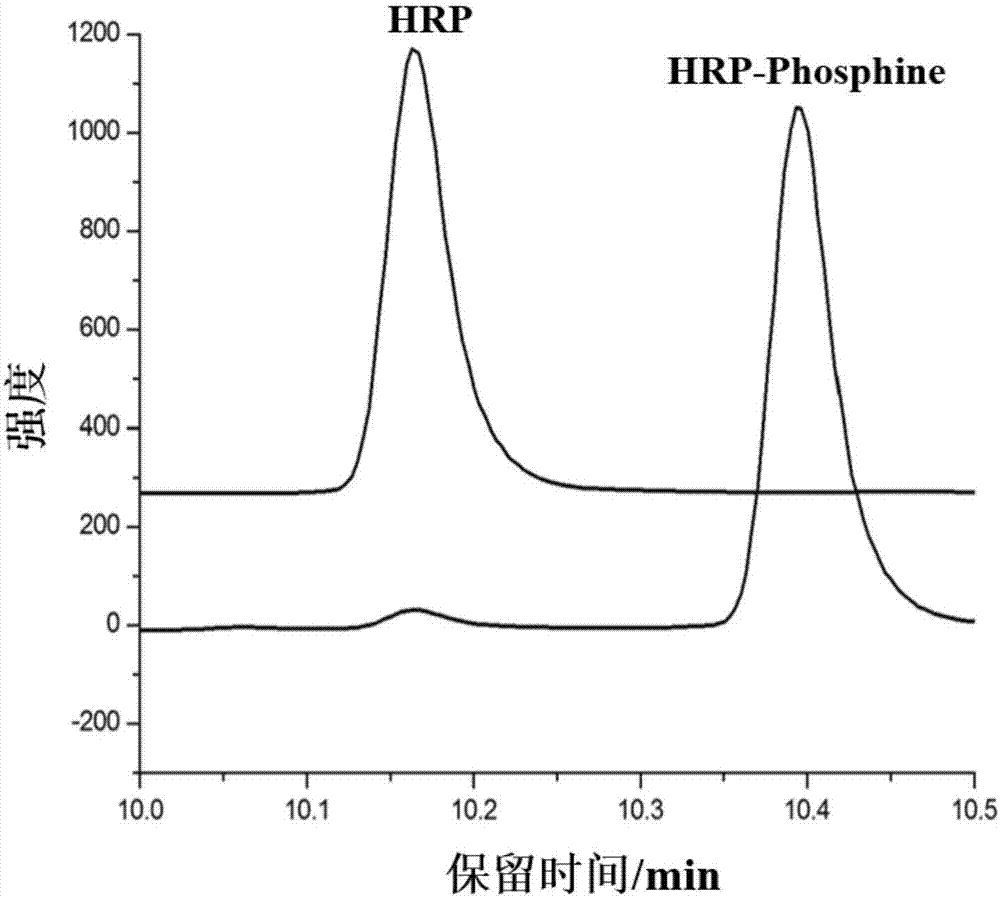Functionalized temperature-sensitive polymer, preparation method of same, and application of same in (PTM) protein detection
A temperature-sensitive, polymer-based technology used in the field of analysis to solve problems that limit the sensitivity and quantitative accuracy of WB detection, and achieve the effect of improving binding capacity
- Summary
- Abstract
- Description
- Claims
- Application Information
AI Technical Summary
Problems solved by technology
Method used
Image
Examples
Embodiment 1
[0075] Embodiment 1, preparation and performance test of functionalized temperature-sensitive polymer
[0076] 1. Preparation
[0077] according to figure 1 The synthetic route shown prepares the functionalized temperature-sensitive polymer, and the specific steps are as follows
[0078] (1) Synthesis of temperature-sensitive polymers: In the presence of initiators, temperature-sensitive monomers and functional monomers undergo radical polymerization reactions to obtain temperature-sensitive polymers Poly(NIPAM-co -AA). details as follows:
[0079] Weigh 0.8g of N-isopropylacrylamide into a 50mL round bottom flask, add 20mL of deionized water to fully dissolve it, add 0.12mL of acrylic acid, stir and mix well, and adjust the pH to 7.0 with 1M NaOH. Then pass N 2 Stir magnetically for 1 h to fully remove O 2 , after 1h, remove N 2 device, seal the round bottom flask, put a stopper on the mouth of the bottle and wrap it with a parafilm, and heat up to 70°C. Weigh 80 mg o...
Embodiment 2
[0095] Example 2. Detection of azide-labeled proteins by functionalized temperature-sensitive polymers
[0096] according to Figure 6 The flow chart shown uses the functionalized temperature-sensitive polymer prepared in Example 1 to detect azide-labeled proteins, and the specific steps are as follows:
[0097] (1) Azide labeling of proteins or their PTMs:
[0098] Labeling by cell metabolism; or using in vitro enzyme-catalyzed labeling.
[0099] Cell metabolism labeling: HeLa cells were cultured in a 37°C incubator. After the density was appropriate, the culture medium was poured out, washed 3 times with PBS, and the cells were cultured in 10mL DMEM containing 10% fetal bovine serum and 1% penicillin and streptomycin mixture. Azide metabolism reagents were added to the medium to make the final concentration 200 μM. After 24 hours of metabolic culture, 10 mL PBS was used to wash 3 times to remove excess azide metabolism reagents. Cells were collected and proteins were extra...
Embodiment 3
[0107] Example 3. Detection of Azide-labeled O-GlcNAc Modified Standard Proteins Using Functionalized Temperature Sensitive Polymers
[0108] (1) According to the in vitro enzyme-catalyzed method described in Example 2, the standard O-GlcNAc protein α-crystallin was azide-labeled. After azide labeling and purification of the α-crystallin standard protein, it was dissolved in 20 mM Hepes buffer solution (pH 7.9) and stored at -80°C for future use.
[0109] (2) Using the SDS-PAGE protein separation, membrane transfer and WB analysis strategies based on functionalized temperature-sensitive polymers described in Example 2, WB analysis was performed on azide-labeled α-crystallin proteins with different loading amounts, The result is as Figure 7 as shown in a. As the loading amount of azide-labeled α-crystallin decreased from 2 μg to 0.01 μg, the gray scale / intensity of its bands in WB detection also weakened, with a good signal response, indicating that this strategy can be used...
PUM
 Login to View More
Login to View More Abstract
Description
Claims
Application Information
 Login to View More
Login to View More - R&D
- Intellectual Property
- Life Sciences
- Materials
- Tech Scout
- Unparalleled Data Quality
- Higher Quality Content
- 60% Fewer Hallucinations
Browse by: Latest US Patents, China's latest patents, Technical Efficacy Thesaurus, Application Domain, Technology Topic, Popular Technical Reports.
© 2025 PatSnap. All rights reserved.Legal|Privacy policy|Modern Slavery Act Transparency Statement|Sitemap|About US| Contact US: help@patsnap.com



